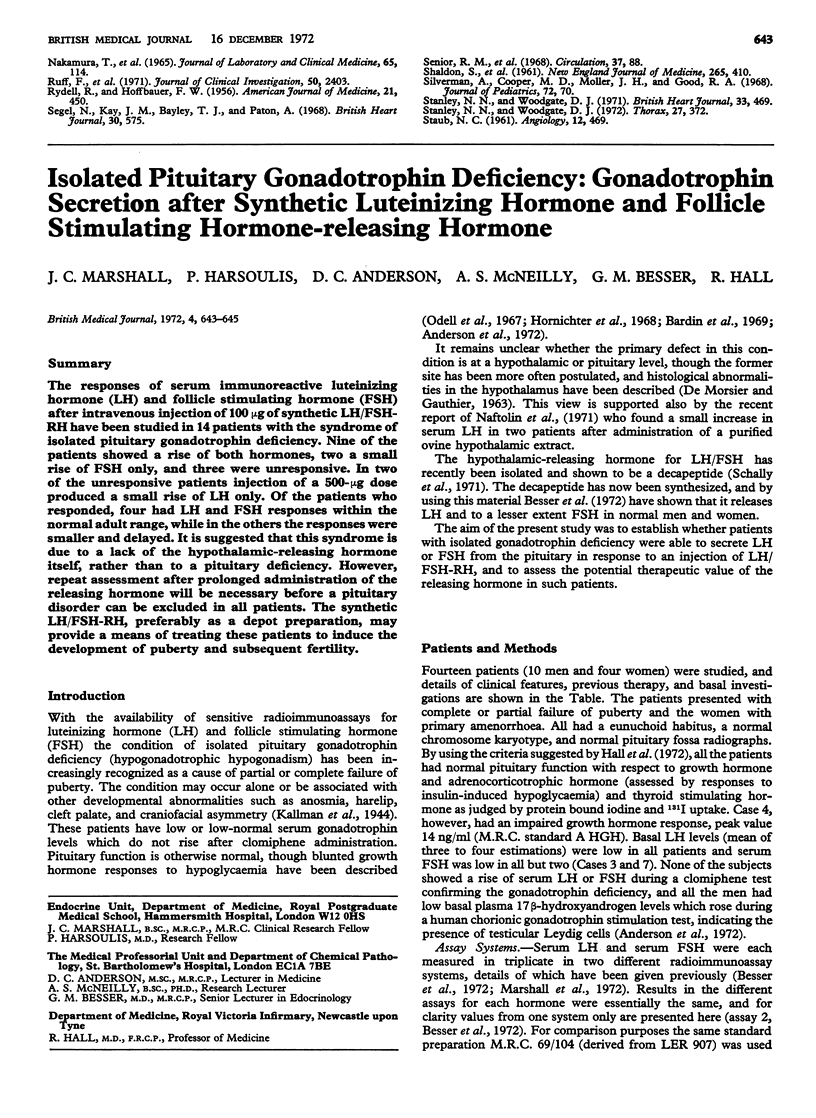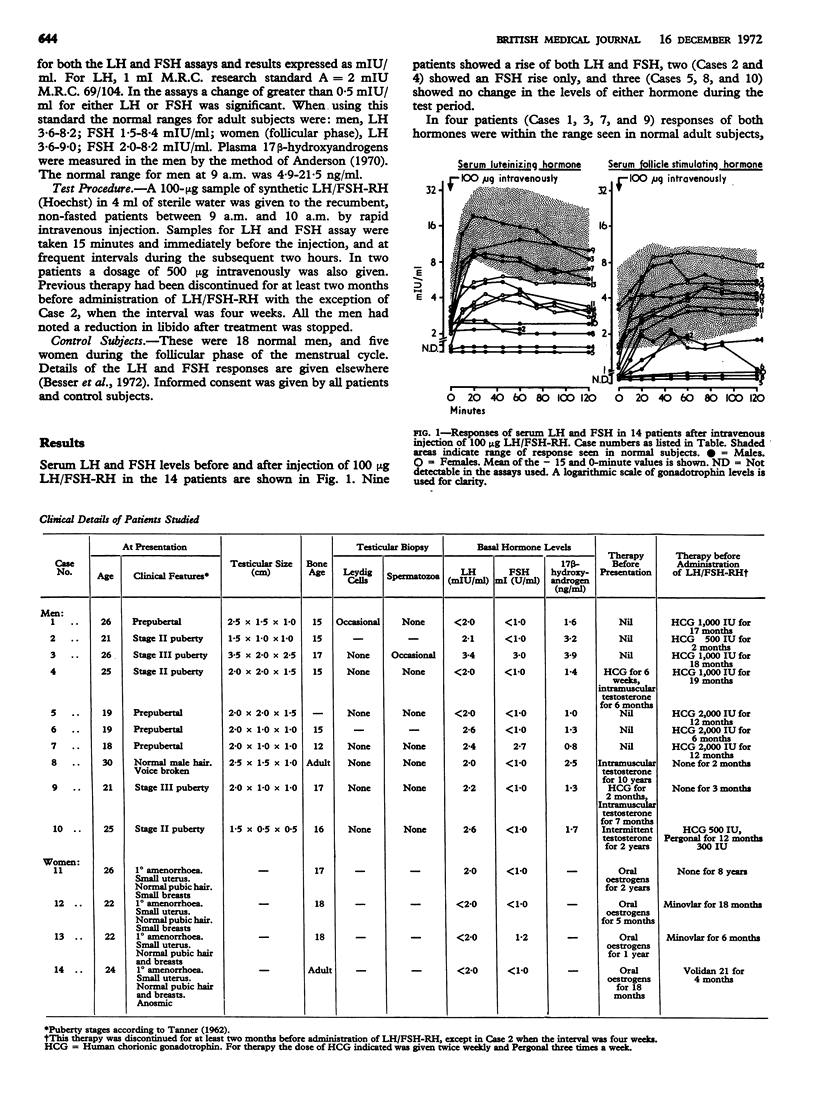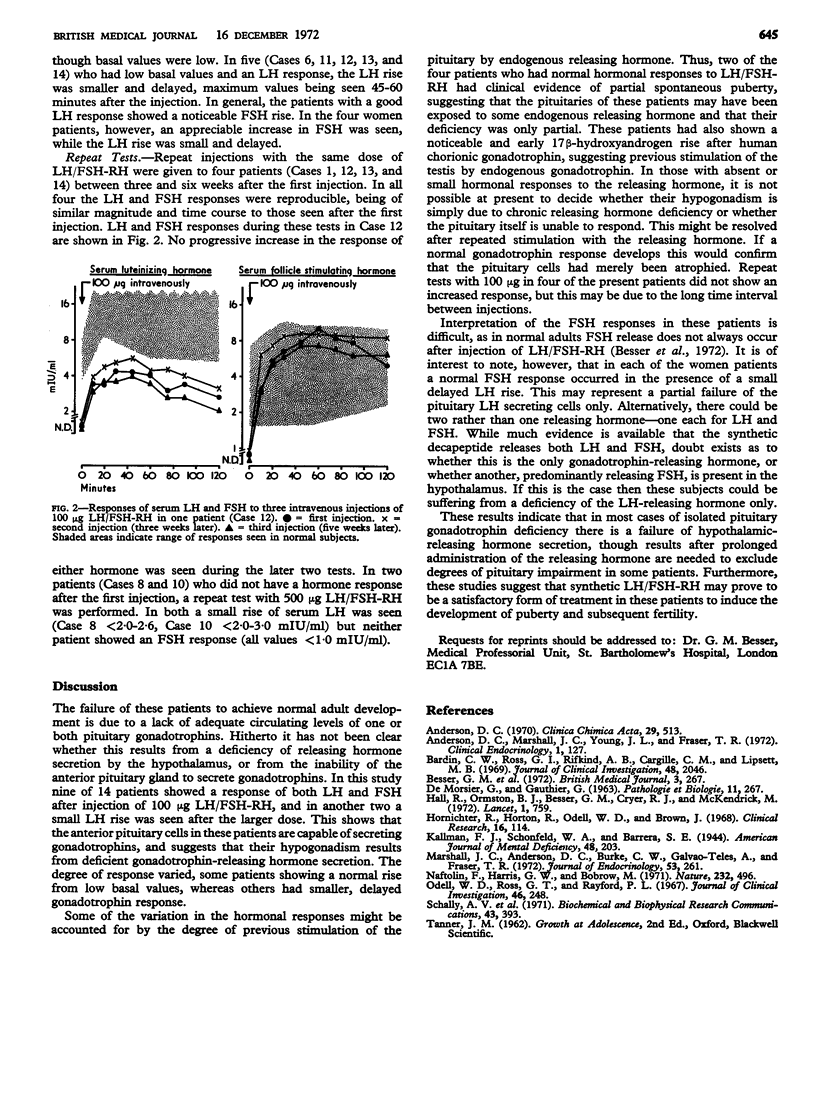Abstract
The responses of serum immunoreactive luteinizing hormone (LH) and follicle stimulating hormone (FSH) after intravenous injection of 100 μg of synthetic LH/FSH-RH have been studied in 14 patients with the syndrome of isolated pituitary gonadotrophin deficiency. Nine of the patients showed a rise of both hormones, two a small rise of FSH only, and three were unresponsive. In two of the unresponsive patients injection of a 500-μg dose produced a small rise of LH only. Of the patients who responded, four had LH and FSH responses within the normal adult range, while in the others the responses were smaller and delayed. It is suggested that this syndrome is due to a lack of the hypothalamic-releasing hormone itself, rather than to a pituitary deficiency. However, repeat assessment after prolonged administration of the releasing hormone will be necessary before a pituitary disorder can be excluded in all patients. The synthetic LH/FSH-RH, preferably as a depot preparation, may provide a means of treating these patients to induce the development of puberty and subsequent fertility.
Full text
PDF


Selected References
These references are in PubMed. This may not be the complete list of references from this article.
- Anderson D. C., Marshall J. C., Young J. L., Fraser T. R. Stimulation tests of pituitary-Leydig cell function in normal male subjects and hypogonadal men. Clin Endocrinol (Oxf) 1972 Apr;1(2):127–140. doi: 10.1111/j.1365-2265.1972.tb00384.x. [DOI] [PubMed] [Google Scholar]
- Bardin C. W., Ross G. T., Rifkind A. B., Cargille C. M., Lipsett M. B. Studies of the pituitary-Leydig cell axis in young men with hypogonadotropic hypogonadism and hyposmia: comparison with normal men, prepuberal boys, and hypopituitary patients. J Clin Invest. 1969 Nov;48(11):2046–2056. doi: 10.1172/JCI106170. [DOI] [PMC free article] [PubMed] [Google Scholar]
- Hall R., Ormston B. J., Besser G. M., Cryer R. J. The thyrotrophin-releasing hormone test in diseases of the pituitary and hypothalamus. Lancet. 1972 Apr 8;1(7754):759–763. doi: 10.1016/s0140-6736(72)90518-1. [DOI] [PubMed] [Google Scholar]
- Marshall J. C., Anderson D. C., Burke C. W., Galvao-Teles A., Fraser T. R. Clomiphene citrate in men: increase of cortisol, luteinizing hormone, testosterone and steroid-binding globulins. J Endocrinol. 1972 May;53(2):261–276. doi: 10.1677/joe.0.0530261. [DOI] [PubMed] [Google Scholar]
- Naftolin F., Harris G. W., Bobrow M. Effect of purified luteinizing hormone releasing factor on normal and hypogonadotrophic anosmic men. Nature. 1971 Aug 13;232(5311):496–497. doi: 10.1038/232496a0. [DOI] [PubMed] [Google Scholar]
- Odell W. D., Ross G. T., Rayford P. L. Radioimmunoassay for luteinizing hormone in human plasma or serum: physiological studies. J Clin Invest. 1967 Feb;46(2):248–255. doi: 10.1172/JCI105527. [DOI] [PMC free article] [PubMed] [Google Scholar]


